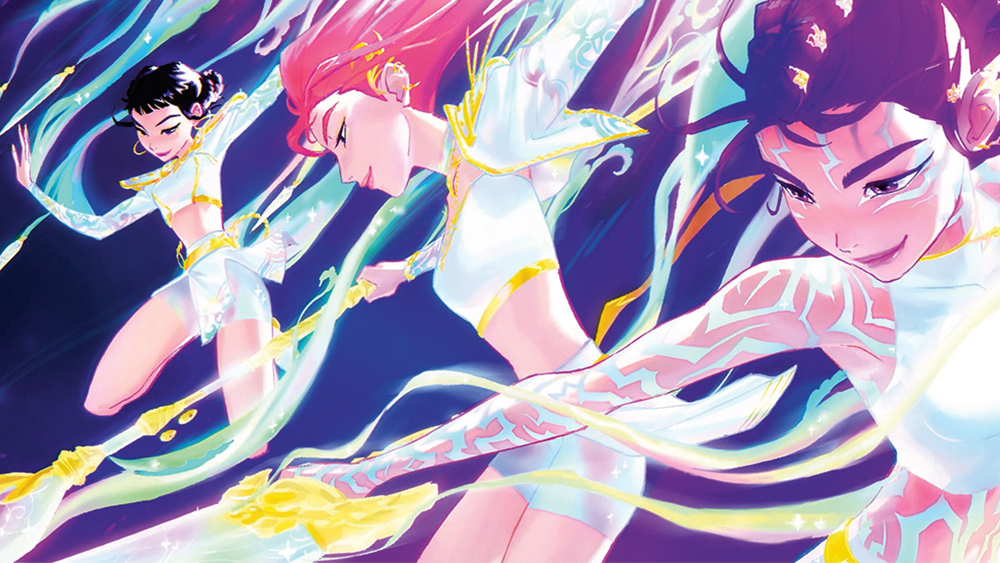The best drawing tablets for kids
Develop your young artist's budding creativity with the best drawing tablets for kids
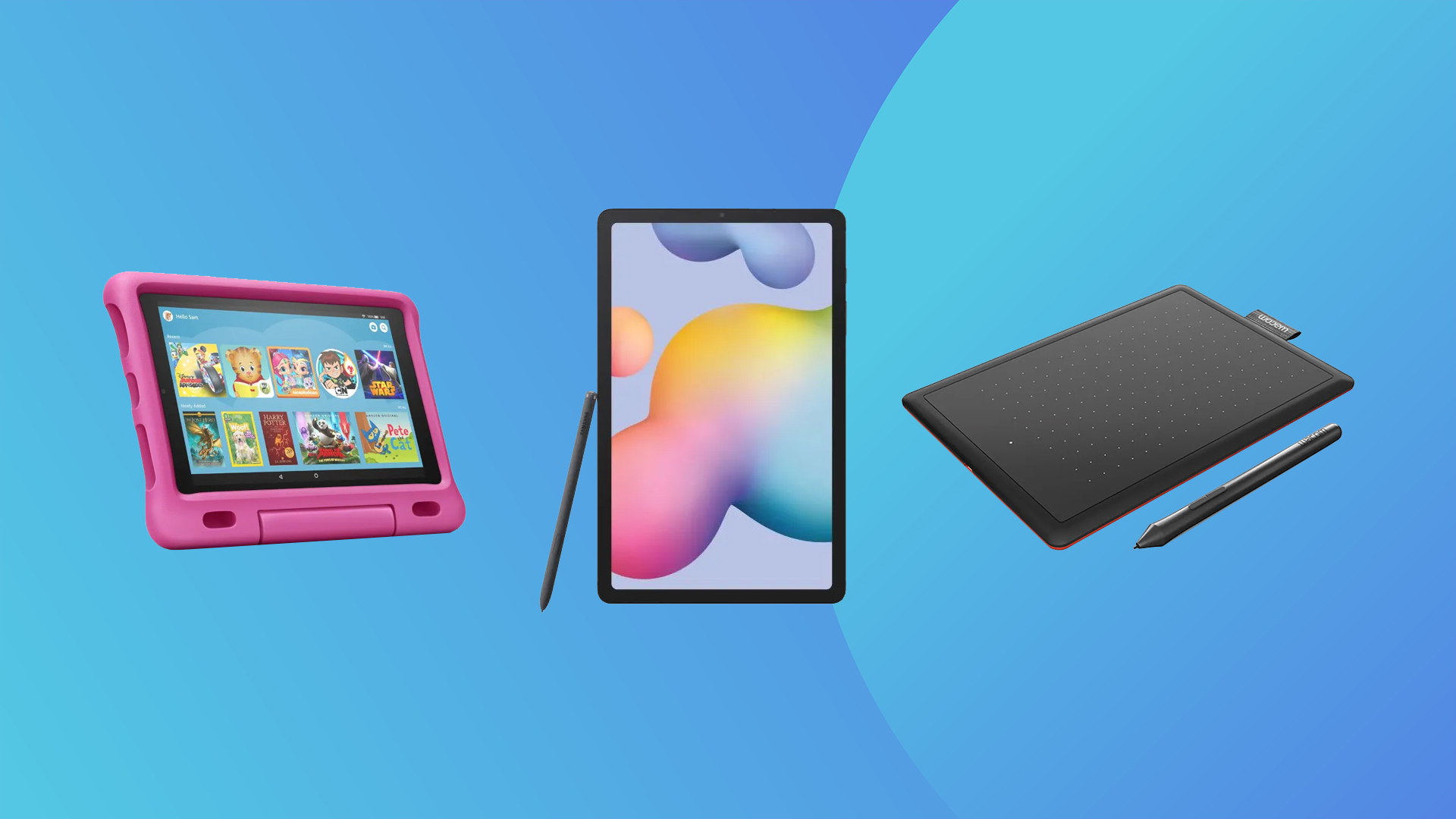
The best drawing tablets for kids are a great investment in your child's future. Rather than staring at a screen and mindlessly watching videos, they'll be encouraged to actually make stuff themselves. That's more fun for them, and helps their brain and creativity develop over time, too.
To help you find the right model, we've pulled together a list of the best drawing tablets for little ones, and divided it into different age categories. We've based this on our long experience in reviewing and testing drawing tablets, as well as our experience of how kids actually interact with tech in the real world.
If you're short on funds, though, see our guide to the best budget drawing tablets. Alternatively, if you're flush with cash, you might also wish to check out the best iPads for art.
Quick list
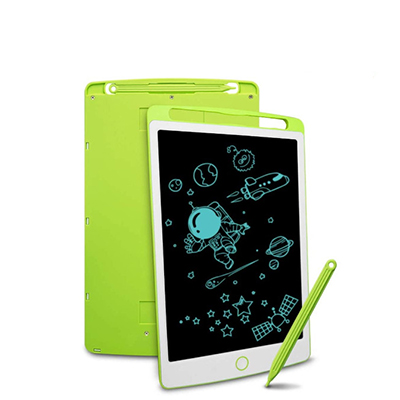
A step up from Etch-A-Sketch, this is the perfect tablet for small children who are just beginning to enjoy drawing. It's easy to use, it's cheap, and it's impressively rugged.
Read more below
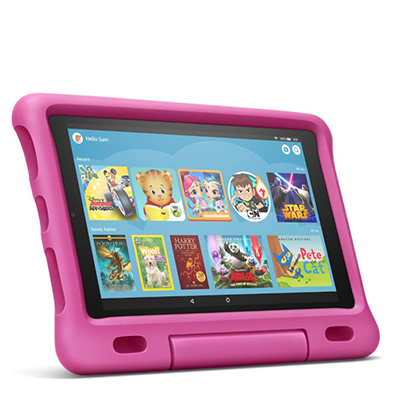
For five- to 11-year-olds, the Amazon Fire HD 10 Kids Edition provides lot of flexibility with web access and a wide range of apps, while providing parental controls.
Read more below
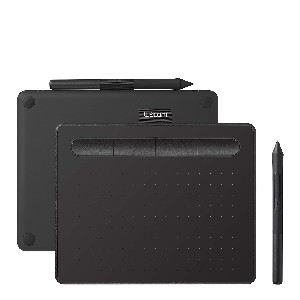
This Wacom tablet is a great all-rounder that doesn't cost a fortune. Bear in mind, though, that it needs to be connected a computer or tablet that has its own display.
Read more below
The best drawing tablets for kids in full
Why you can trust Creative Bloq
The best kids' drawing tablet for toddlers

Specifications
Reasons to buy
Reasons to avoid
This is a drawing tablet for really tiny hands. Available in a choice of bright colours, it's the perfect tablet for small children who are just beginning to enjoy drawing. It's easy to use, it's cheap, and it's impressively rugged and splash-resistant too.
If we were to give the Richgv LCD tablet some product context, we'd say that it's a step up from an Etch-A-Sketch. It's powered by a single CR2016 coin battery, and with the included stylus kids can write or doodle on the screen with clear, sharply delineated lines. You can then hit the clear button to refresh the screen whenever you like. Another thing we like is it's compact enough to take anywhere – a great emergency distraction when you're out and about.
There's no internal memory, so the tablet won't be able to save any doodles. If your kid is old enough to be bothered about that then they're likely ready for one of the next tablets on our list. For the littlest ones though, we think this is the ideal starter drawing tablet. Read more in our full Richgv LCD tablet review.
The best drawing tablet for kids aged 5 to 11
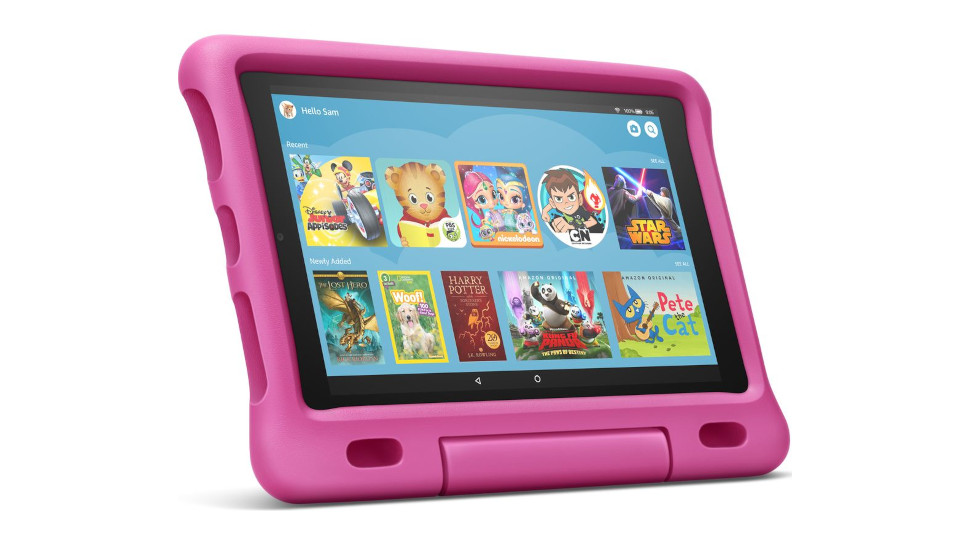
02. Amazon Fire HD 10 Kids Edition
Our expert review:
Specifications
Reasons to buy
Reasons to avoid
Considering a proper tablet for your kids? While Apple and Samsung's tablets are reasonably solid and kid-friendly (find out more further down this list), they're not specifically designed for children. The Amazon Fire HD 10 Kids Edition is a tablet that's properly suitable for little hands, and so for our money, it's the best choice for the pretty big 5-12 year range.
The tablet comes with a year's subscription to Amazon Fire for Kids Unlimited, meaning you can pick from the various drawing and doodling apps in Amazon's appstore to get your child started on an artistic adventure – though do bear in mind that you'll need to pick up a stylus separately, as it doesn't come in the box. The Fire HD 10 Kids Edition doesn't have pressure sensitivity or other advanced drawing features, meaning any cheap stylus will do the trick. See our guide to the best Android styluses for some ideas.
Also, while the Amazon Fire HD 10 Kids Edition does have internet access, it comes with plenty of handy parental controls that let you control what content your child can access, and even set screen time limits.
Best for 12+
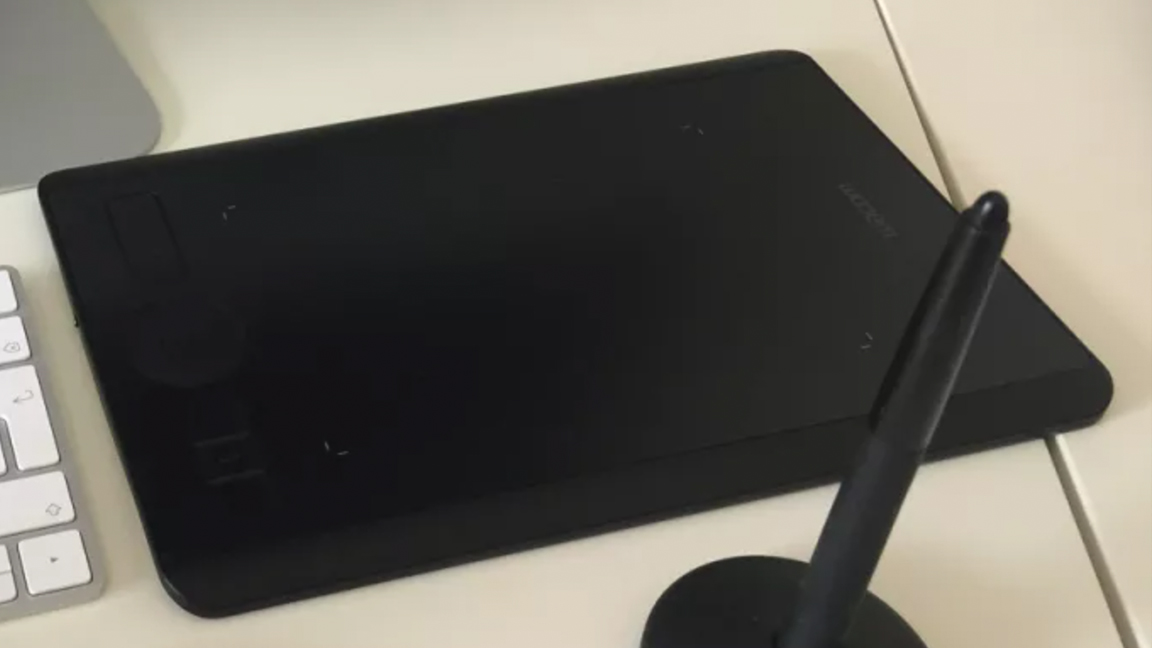
Specifications
Reasons to buy
Reasons to avoid
For kids and young teenagers, you can't go far wrong with the Wacom Intuos S. The smallest member of the Intuos family, it's a great all-rounder that doesn't cost a fortune; bear in mind, though, that it needs to be connected a computer or tablet with its own display. With the Intuos s you get a flexible range of drawing options, and it comes with the Wacom Pen 4K, which is battery-free and delivers 4,096 levels of pressure sensitivity.
The Inuos S has four ExpressKeys, which can be customised to preferred functions, and four rubber feet to help it stay still on flat surfaces. If you're aware of Wacom's reputation for expensive gear then the relatively slender price of the Intuos S may come as a pleasant surprise; the tablet is also a couple of years old, so discounts do tend to pop up not infrequently. Keep an eye out.
The only real bugbear with the Intuos S is that its drawing surface might simply be too small for some ambitious young artists (see our Wacom Intuous Pro Small review for more details). There are larger Intuos models available if you suspect that might be the case, though be aware that these do come at higher prices.
Best for older teens
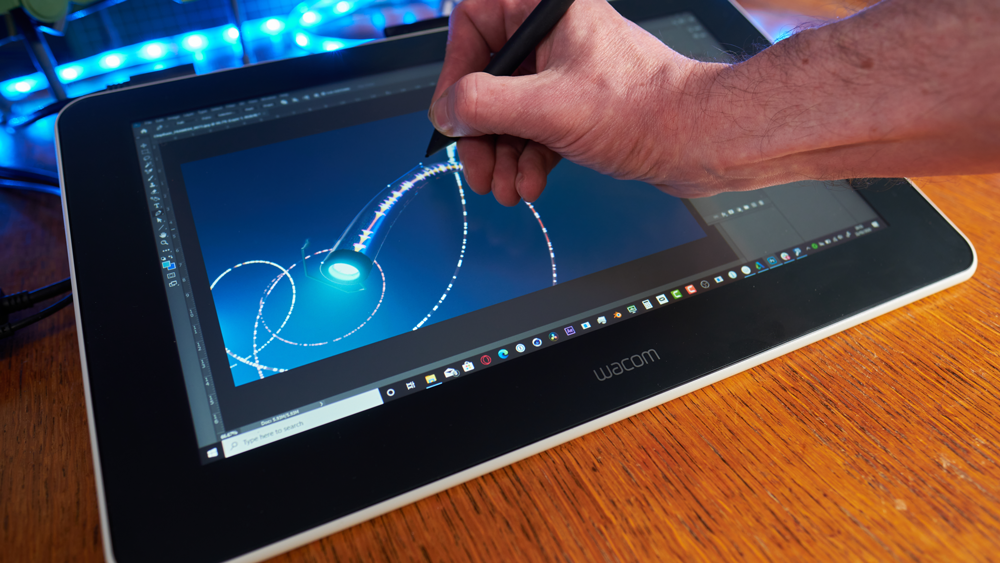
Specifications
Reasons to buy
Reasons to avoid
Wacom makes premium drawing tablets for professional artists, but the Wacom One sees it venture into more budget territory with an affordable pen display for beginners. It has much of the same great tech you'd find in the larger, more expensive Wacom drawing tablets in a small package.
Obviously, some sacrifices are made for the price point. The stylus isn't as sophisticated as the one that comes with Wacom's professional tablets, and the screen brightness and resolution are lower. Nevertheless, we think this is a a great affordable option for a young artist to hone their skills, and it's perfectly sized to drop into a school bag or college backpack.
While originally released for Windows and Mac, the One by Wacom is now compatible with Android devices and most importantly Chromebooks; just plug it in, download the drivers and you're off. As a lot of students and kids now use Chromebooks for school and college work, this is a huge advantage.
See our full Wacom One review for more details.
How to choose the best drawing tablet for kids
Choosing a drawing tablet for kids will depend largely on age and skill level. We've divided the tablets above into general age categories, but if your child has above-average drawing ability, you may wish to step up above their physical age.
Broadly speaking, though, younger children will benefit from simpler tablets with touchscreens and kid-friendly apps. Older children, in turn, may prefer pen-based tablets with pressure sensitivity for more realistic drawing experiences.
Also consider factors such as durability, portability, and compatibility with other devices. Look for tablets with educational features and parental controls for a safe and engaging learning experience.
How we test the best drawing tablet for kids
At Creative Bloq, we have over a decade's experience of reviewing, testing and using drawing tablets. Typically, we'll spend significant time (weeks or even months) using the tablet in real-world scenarios. When evaluating drawing tablets for kids, we'll pay attention to their durability, ease of use, and educational value. We'll also assess their build quality, screen responsiveness, and pen accuracy, as well as considering the included software, age-appropriate features, and parental controls.
FAQs
What age is appropriate for a drawing tablet?
Every child is different, and there's no standard age to start them with a drawing tablet. Tablets with touchscreens and simple drawing apps can be enjoyed by toddlers, while older children may benefit from pen-based tablets with more advanced features.
What are the different types of drawing tablets?
There are two main types of drawing tablet. A touchscreen tablet uses a touchscreen display as its primary input method. This type is usually easier for young children to use and often come with pre-loaded educational apps.
Pen-based tablets, meanwhile, provide a space to draw on, but you have to connect them to a screen to see what you've drawn. This type of drawing tablet offers more precise control and is better suited for older children and aspiring artists.
How can I encourage my child to use their drawing tablet creatively?
If your child is staring at their drawing tablet and struggling to get started, provide inspiration by showing them art books, visiting museums, and watching art-related videos together. For older children, encourage them to use their tablet for at least 15-30 minutes each day by setting aside dedicated creative time. Praise their efforts and celebrate their accomplishments, providing positive feedback and encouragement. Focus on the joy of the creative process, rather than the final product, and avoid criticising their work.
Daily design news, reviews, how-tos and more, as picked by the editors.

Matt has been a technology journalist for over 15 years, writing for publications such as T3, MacFormat and Creative Bloq. He's a managing editor of TechRadar, Creative Bloq's sister site, where he can be found writing about and reviewing laptops, computers, monitors and more. He often writes for Creative Bloq, helping creatives find their perfect laptop or PC.
- Beren NealeEcom Editor
